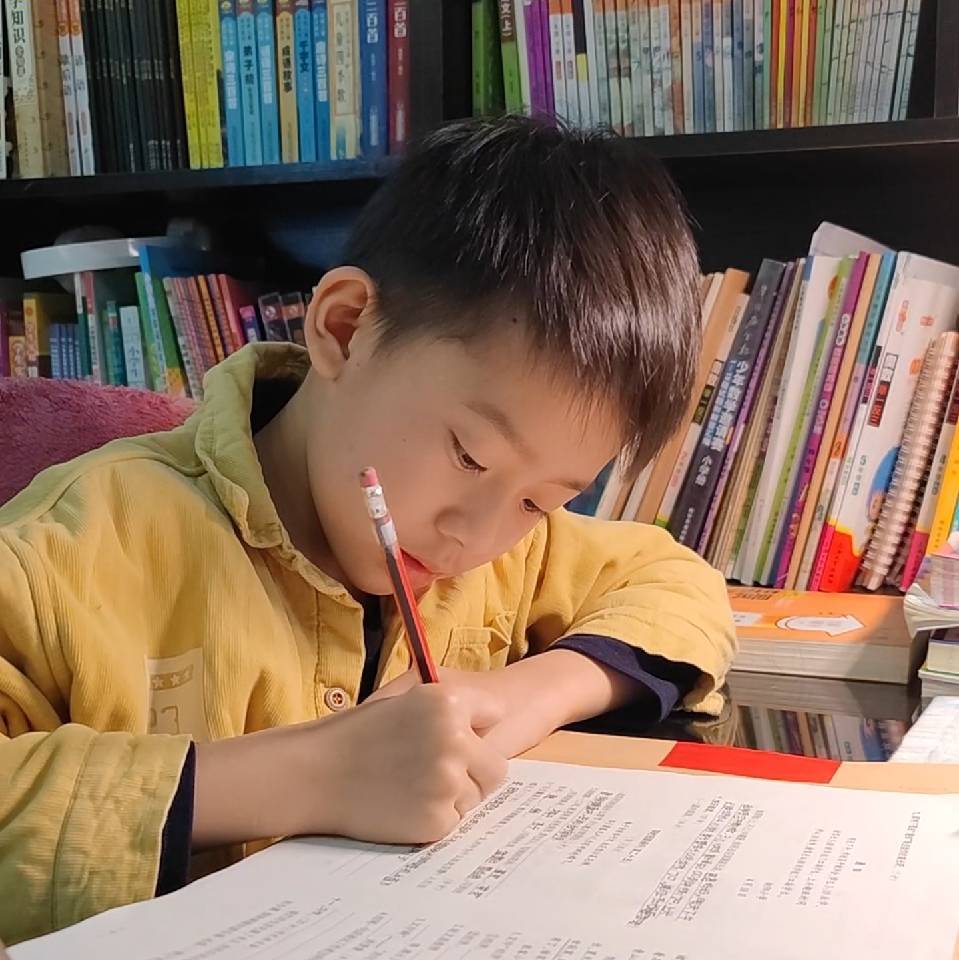代词:关系代词(who/whom/whose/that)
关系代词是用来引导定语从句的代词。英语中的关系代词主要有:who(指人,主格)、whom(指人,宾格)、whose(指人或物,所有格)、that(指人或物)、which(指物)。
一、用法
1. 关系代词在定语从句中充当一定的成分,如主语、宾语、定语等。
例如:The man who is standing there is my teacher.(站在那里的那个人是我的老师。)“who”在从句中作主语。
I know the girl whom you met yesterday.(我认识你昨天见到的那个女孩。)“whom”在从句中作宾语。
This is the book whose cover is red.(这是那本封面是红色的书。)“whose”在从句中作定语。
The book that I bought yesterday is very interesting.(我昨天买的那本书很有趣。)“that”在从句中作宾语。
The house which is near the river is mine.(河边的那座房子是我的。)“which”在从句中作主语。
2. 关系代词的选择取决于先行词(被定语从句修饰的名词或代词)以及在从句中的作用。
当先行词是人时,可以用 who、whom、that;当先行词是物时,可以用 which、that。
例如:The man who/that is talking to her is my brother.(正在和她说话的那个人是我的哥哥。)
The book which/that I read yesterday is very good.(我昨天读的那本书非常好。)
二、特殊用法
1. 在一些情况下,只能用 that 而不能用 which/who。
先行词是不定代词 all、everything、nothing、something 等时。
例如:All that he said is true.(他所说的一切都是真的。)
先行词被序数词、形容词最高级或 the only、the very 等修饰时。
例如:This is the first book that I bought.(这是我买的第一本书。)
He is the most careful student that I have ever taught.(他是我教过的最细心的学生。)
2. whose 既可以指人也可以指物,表示所属关系。
例如:The man whose car was stolen called the police.(那个车被偷的人报了警。)
I live in a house whose windows face south.(我住在一座窗户朝南的房子里。)
扩展:定语从句
定语从句是由关系代词或关系副词引导的从句,其作用是作定语修饰主句中的某个名词或代词。
一、结构
定语从句一般由先行词(被修饰的名词或代词)、关系词(关系代词或关系副词)和从句组成。
例如:The book that I bought yesterday is very interesting.(“The book”是先行词,“that”是关系代词,“I bought yesterday”是从句。)
二、关系代词引导的定语从句
1. who:用于指人,在从句中作主语或宾语。
例如:The man who is standing there is my teacher.(“who”在从句中作主语。)
I know the girl who/whom you met yesterday.(“who”在从句中作宾语,也可用“whom”,但在口语中常被“who”代替。)
2. whom:用于指人,在从句中作宾语。
例如:The man whom she loves is a doctor.(“whom”在从句中作宾语。)
3. whose:用于指人或物,在从句中作定语,表示所属关系。
例如:The man whose car was stolen called the police.(“whose”修饰“man”,表示“那个人的”。)
I live in a house whose windows face south.(“whose”修饰“house”,表示“那座房子的”。)
4. that:可用于指人或物,在从句中作主语、宾语或表语。
例如:The book that I bought is very useful.(“that”在从句中作宾语,指“book”。)
The man that is speaking is my father.(“that”在从句中作主语,指“man”。)
5. which:用于指物,在从句中作主语、宾语或表语。
例如:The book which is on the table is mine.(“which”在从句中作主语,指“book”。)
I like the movie which we watched yesterday.(“which”在从句中作宾语,指“movie”。)
三、关系副词引导的定语从句
1. when:用于表示时间的先行词之后,在从句中作时间状语。
例如:I still remember the day when we first met.(“when”在从句中表示“在那一天”。)
2. where:用于表示地点的先行词之后,在从句中作地点状语。
例如:This is the place where we had a picnic.(“where”在从句中表示“在那个地方”。)
3. why:用于表示原因的先行词之后,在从句中作原因状语。
例如:I know the reason why he is late.(“why”在从句中表示“因为那个原因”。)
四、定语从句的注意事项
1. 关系代词在从句中作宾语时可以省略。
例如:The book (that/which) I bought yesterday is very interesting.
2. 先行词在从句中作主语时,从句的谓语动词要与先行词保持一致。
例如:He is one of the students who are never late.(先行词“students”是复数,从句谓语动词用“are”。)
He is the only one of the students who is never late.(先行词被“the only one”修饰,强调“唯一的一个”,先行词是单数,从句谓语动词用“is”。)
3. 定语从句要紧跟在先行词之后,但有时会被一些成分隔开,这种情况被称为分隔定语从句。
例如:The book, which I bought yesterday, is very interesting.(“which I bought yesterday”是定语从句,被逗号和主句隔开,修饰先行词“book”。)
英语基础
- 广东中考英语满分(90分+30分听说)
- 词性:名代形副动,数介连叹助
- 名词:名词分类、可数名词的数、名词所有格
- 名词:名词分类-普通名词
- 名词:名词分类-不可数名词
- 名词:名词分类-专用名词
- 名词:名词分类-可数名词(复数形式变化规则)
- 名词:名词分类-集体名词
- 名词:名词的所有格
- 名词:高频名词
- 名词:名词的单复数形式在句子中是如何体现的?
- 名词:常用的不规则名词复数形式有哪些?
- 名词:名词的句法功能
- 名词:英语中名词性数的一致规则
- 名词:名词的性(阳性、阴性、中性)
- 代词:代词分类、代词用法
- 代词:人称代词(主格、宾格、物主、反身)
- 代词:指示代词(this/that/these/those)
- 代词:疑问代词(who/whom/what/which)
- 代词:不定代词(some/any/many/much/few)
- 代词:关系代词(who/whom/whose/that)
- 冠词:不定(a/an)定冠词(the)零冠词
- 零冠词:季节、月份、星期、节日、运动等名词
- 形容词:作用、分类、级、位置
- 形容词:形容词作定语+名词
- 形容词:系动词+形容词作表语
- 形容词:作宾语补足语
- 形容词:性质形容词
- 形容词:状态形容词
- 形容词:颜色形容词
- 形容词:限定形容词
- 形容词:比较级
- 形容词:最高级
- 形容词:不规则的比较级与最高级
- 形容词:形容词的修饰词
- 形容词:知识点、中考真题
- 副词:特点、作用、分类
- 副词:时间副词
- 副词:地点副词
- 副词:方式副词
- 副词:程度副词
- 副词:频率副词
- 数词:基数词、序数词
- 量词(50个高频量词的使用)
- 介词(英语重要的虚词)
- 介词:常用的英语介词有哪些?
- 介词:高频英语介词应用例子
- 介词:时间/地点介词记忆口诀
- 英语:介词短语
- 动词:动名词与现在分词的区别
- 动词:动词语法概述
- 动词:及物动词与不及物动词的区别
- 动词:延续性动词与非延续性动词的区别
- 动词:系动词(主语+系动词+表语)
- 动词:助动词 be/do/have/will/can
- 动词:情态动词 can/may/shall/must
- 动词:动词的形式
- 动词:动词的16种时态(概述)
- 01 现在一般时
- 02 过去一般时
- 03 将来一般时 will + 动词原形
- 04 过去将来一般时 would + 动词原形
- 05 现在进行时 be(am/is/are)+ 现在分词
- 06 过去进行时 was/were + 现在分词
- 07 将来进行时 will be + 现在分词
- 08 过去将来进行时 would be + 现在分词
- 09 现在完成时 have/has + 过去分词
- 10 过去完成时 had + 过去分词
- 11 将来完成时 will have + 过去分词
- 12 过去将来完成时 would have + 过去分词
- 13 现在完成进行时 have/has been + 现在分词
- 14 过去完成进行时 had been + 现在分词
- 15 将来完成进行时 will have been + 现在分词
- 16 过去将来完成进行时 would have been + 现在分词
- 时态横向比较:四种(一般)时态的相同点与不同点
- 时态横向比较:四种(进行)时态的相同点与不同点
- 时态横向比较:四种(完成)时态的相同点与不同点
- 时态横向比较:四种(完成进行)时态的相同点与不同点
- 时态纵向比较:4种(现在)时态的相同点与不同点
- 时态纵向比较:4种(过去)时态的相同点与不同点
- 时态纵向比较:4种(将来)时态的相同点与不同点
- 时态纵向比较:4种(过去将来)时态的相同点与不同点
- 语态:什么是语态?
- 语态:各类时态的主动语态
- 语态:各类时态的被动语态
- 语态:各类时态的被动语态的否定形式
- 句子:句子(概述)
- 句子:主语是什么?
- 句子:谓语是什么?
- 句子:宾语是什么?
- 句子:表语是什么?
- 句子:定语是什么?
- 句子:状语是什么?
- 句子:补语是什么?
- 非谓语动词:不定式、动名词、分词
- 英语:什么是连词?
- 英语:什么是感叹词?
- 英语:主谓一致
- 英语:句子的分类
- 句子:各类时态的肯定陈述句、否定陈述句
- 句子:各种时态的一般疑问句
- 句子:各种时态的各类特殊疑问句
- 从句:名词性从句、形容词性从句、副词性从句
- 名词性从句:主语、宾语、表语、同位语从句
- 名词性从句:主语从句
- 名词性从句:宾语从句
- 名词性从句:表语从句
- 名词性从句:同位语从句
- 直接引语和间接引语
- 形容词性从句:定语从句
- 副词性从句:状语从句
- 副词性从句-状语从句:时间状语从句
- 地点状语从句:where、wherever
- 原因状语从句:because、since、as
- 条件状语从句:if、unless、as long as/so long as
- 目的状语从句:so that、in order that
- 结果状语从句:so...that...、such...that...
- 让步状语从句:although/though、while
- 方式状语从句:as、as if/as though
- 比较状语从句:as...as...、not as/so...as...、than
- 虚拟语气
- There be句型
- 特殊英语句子结构:倒装
- 特殊英语句子结构:强调
- 特殊英语句子结构:省略
- 中考英语:听力、单项、完形、词汇、阅读、短文
- 100句初中英语教师课堂常用语
- 中考英语983个核心单词
- 2023年广东中考英语试题(待续)
- 2024年广东中考英语试题
- 2025年广东中考英语试题(待续)
- 2026年广东中考英语试题(待续)
